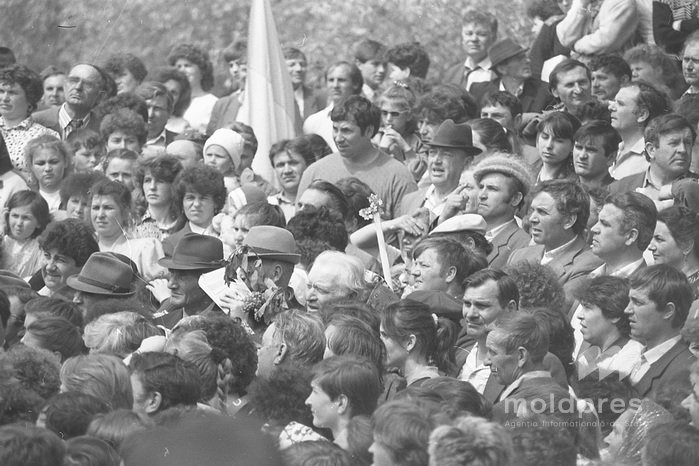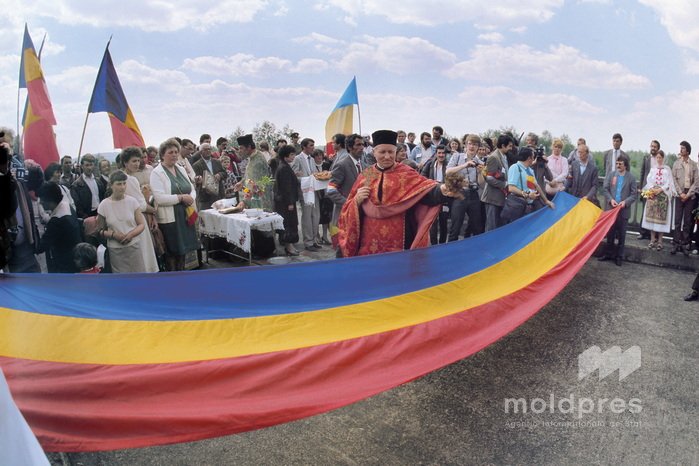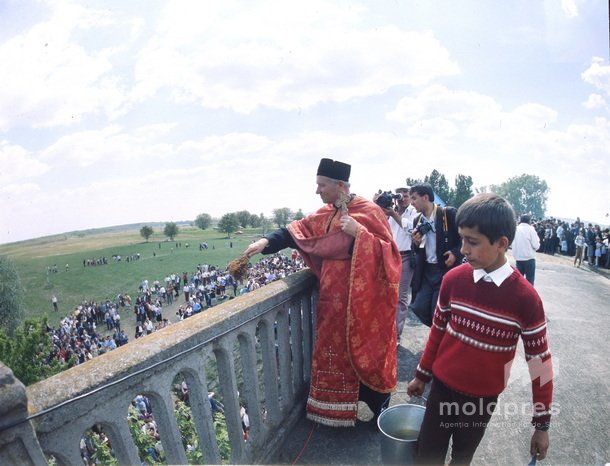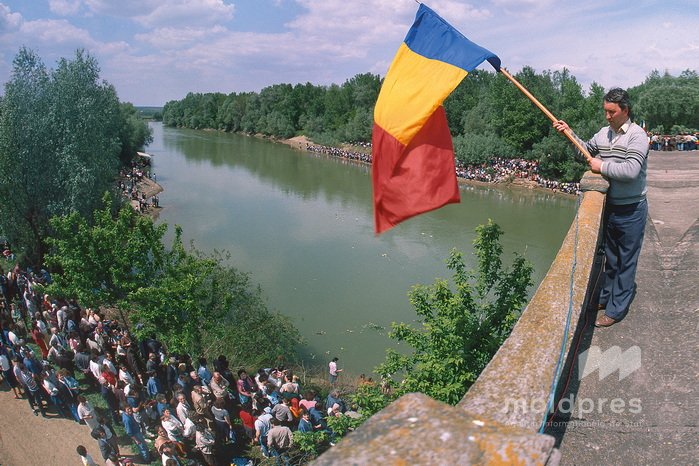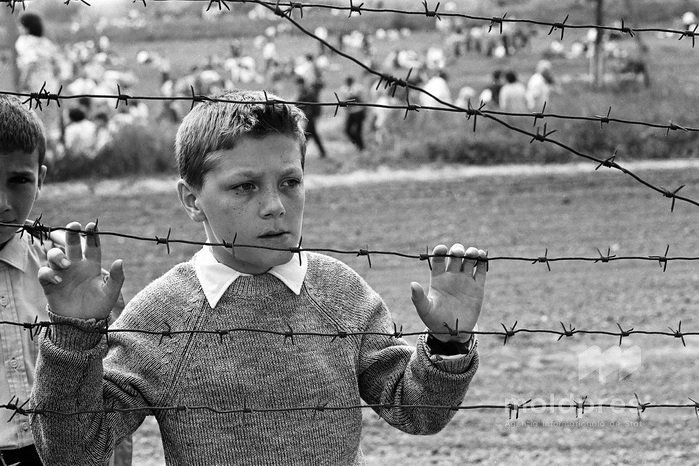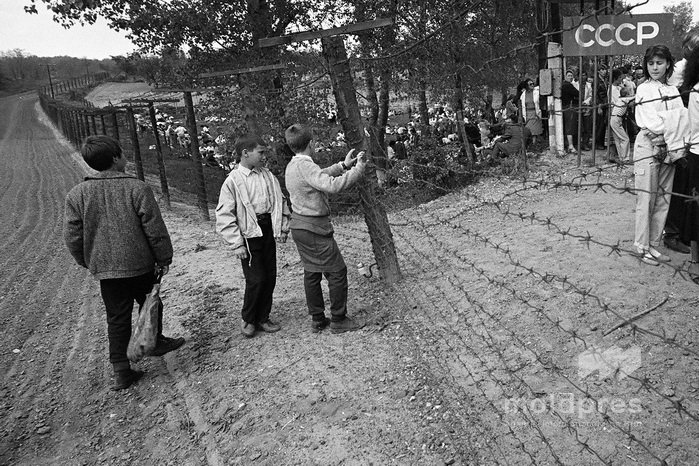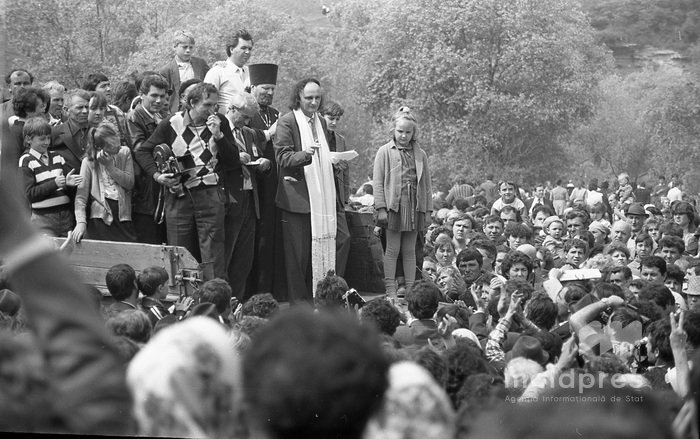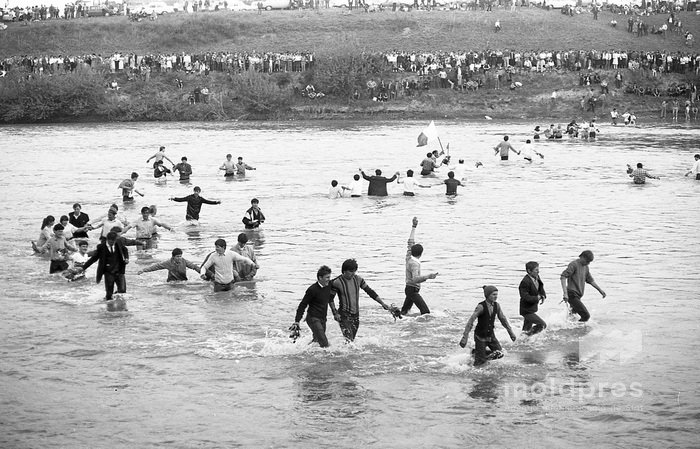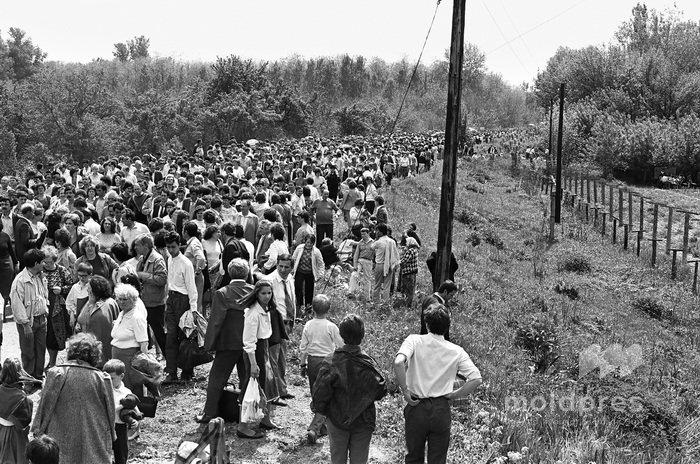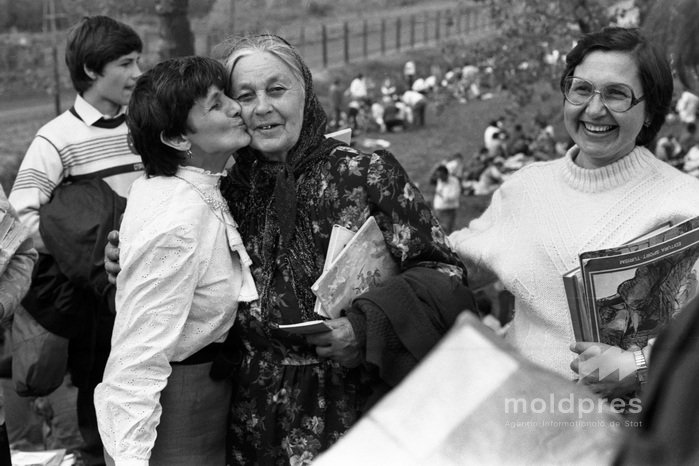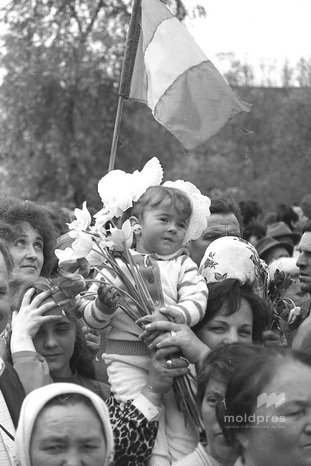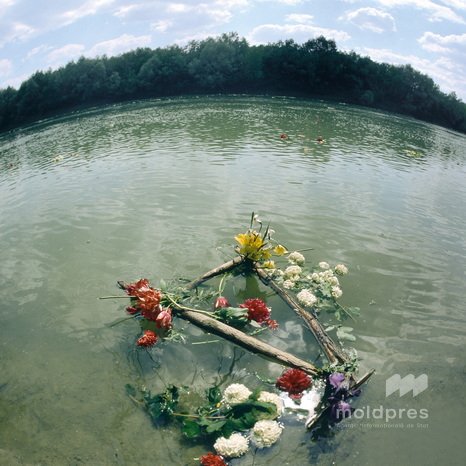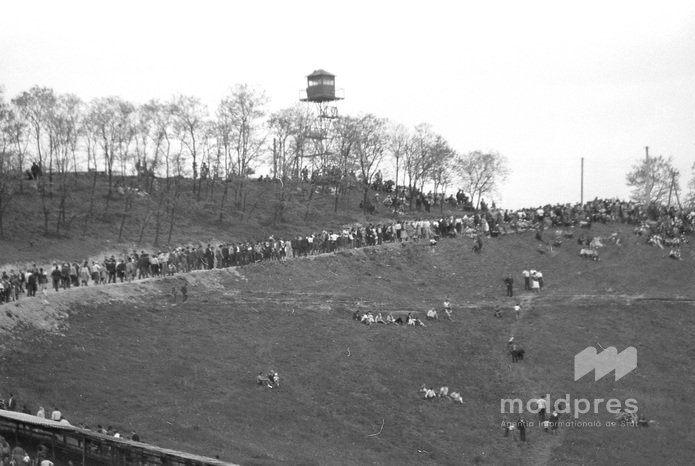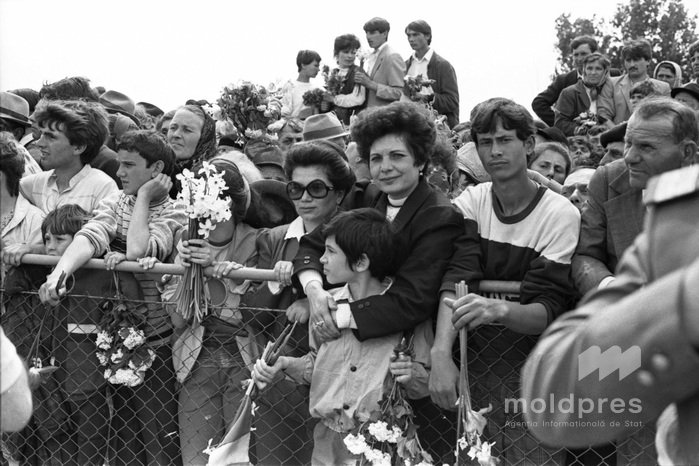
35 years since first Bridge of Flowers
Photo: Mihai Potârniche
Today we mark 35 years since the first Bridge of Flowers, which broke the barbed wire between the Republic of Moldova (then a Soviet republic) and Romania. Over a million people from both banks of the Prut River, isolated for more than four decades, met, embraced, and reunited. This event with profound historical and emotional significance is still remembered today by the inhabitants of the Republic of Moldova. The Bridge of Flowers was a symbol of unity, freedom, an open path to Europe.
6 May 1990. Ion Hadârcă: 'It was one of the most beautiful Sundays in our recent history.'
On 6 May 1990, it was a Sunday of reunion, courage, and the rebirth of national dignity. At the eight crossing points – from Costești-Stânca to Giurgiulești – over a million people called each other by name from different banks, hugged through tears, and threw flowers over the water as a pledge of brotherhood.
Among the participants were personalities, but also thousands of citizens, clerics, artists, and officials united by the same dream: a common future in peace and dignity.'It was a day of communication, of cleansing – one of the most beautiful Sundays in our recent history. I was one of the craftsmen of this idea, discussed within the socio-political formation I led, in collaboration with the Romanian Cultural League in Bucharest. The constitutive document was signed on April 23. I was present with an official team, headed by then Minister of Culture Ion Ungureanu, alongside other government representatives, at the crossing point of Leușeni. I participated in the solemn moment when the two border guards, from both sides of the Prut, opened the border, waiting for the brothers from both countries. A very significant moment was the throwing of flowers – the symbolic bridge of flowers, a blooming of the Prut, and an act of purification. It is difficult to express all those feelings in words: there was joy, laughter, songs, dances, and tears at the same time. A group of priests, led by the archimandrite from Iași, who blessed this achievement, was present. Ion and Doina Aldea-Teodorovici sang, along with many other artists,' writer Ion Hadârcă, former First Deputy Speaker said.
Director Vlad Druc: 'It was a sea of people breathing in a single lung.''It was a state of euphoria,' recalls director Vlad Druc, who filmed the first Bridge of Flowers at the Leușeni-Albița crossing point.
'Full buses, people who had woken up early in the morning and hastened to cross the Prut. Such an atmosphere has never been before or since. After 40 years of captivity, people realized they could be free, speak their language, the language no one edits. I have never seen such Moldovans. (...) As a filmmaker, I am enthusiastic about many things, but what I saw then overwhelmed me: a sea of people, with flowers, crowding, calling out names, it was something that moved one to tears. It was a sea of people breathing in a single lung. In Albița, a whole field was full of musicians, orchestras, and people of different ethnicities,' recalls the filmmaker.
Ion Ungureanu: 'The day will come when the bridge of flowers will continue into eternity.'Director Vlad Druc captured with his camera emotional embraces, thousands of people walking with flowers on the path lined with barbed wire. Alongside them walked the leaders of the National Liberation Movement.
'These tears gathered us together today because pain gathers kinsmen when there is a danger that the kin will be divided forever, something that neither our kin nor God will allow. I am absolutely convinced that these bridges of flowers will tear down the concrete walls and the barbed wire just as the Berlin Wall was torn down. The day will come when the bridge of flowers will open at 8 in the morning and will continue into eternity, forever,' said in a speech at the Flower Bridge at Leușeni on May 6, 1990, Minister of Culture Ion Ungureanu.
Grigore Vieru: 'They all met in the middle of the Prut and started a dance there, in the water.'In an interview given in the last years of his life, poet Grigore Vieru recalled the emotions experienced that day by his fellow villagers from Pererâta. They were hungry for freedom. On that day, they were not separated by barbed wire or the waters of the Prut anymore.
'There was an indescribable emotional tension. People called each other by name and found each other after years and years. At one point, on the other side of the river, a man jumped into the water and began to come towards the Bessarabians on this side. My people from Pererâta stood frozen. They were very emotional and did not dare to make any move until a Pererâta man jumped into the water. After him, the others also began. They all met in the middle of the Prut and started a dance there, in the water, something never seen and heard anywhere else in the world. That's why I say that today those who mock the Bridge of Flowers seem ridiculous. The tear of joy cannot be mocked,' recalled poet Grigore Vieru in an interview from 2008.
Alexandra Piscunov, mayor of Vadul lui Isac, Cahul: 'The Flower Bridge was a hope for us.'
Alexandra Piscunov, the current mayor of the village Vadul lui Isac, Cahul, remembers with emotion the day she was at the Flower Bridge at the Cahul-Oancea crossing point. Back then, she was a young woman marked by family stories, raised in the Romanian spirit, with deep roots in Galați county. Her grandparents were from across the Prut. Her father, born in 1912, had school and army service in Romania, becoming a sergeant in the Romanian Army.
'I was raised in a Romanian spirit. My dad used to sing Romanian songs to me and recite poems, but back then, we spoke secretly about being Romanian. He proudly said that he was part of Greater Romania and that we are a piece of that land. It's a pity he didn't live to see that moment. Another reason that took me to the banks of the Prut was that both I and my classmates had kept in touch for years through letters with children our age from across the Prut. The Flower Bridge was a hope for us – the hope of finally meeting some of those children. The emotions were very high. It was a warm day with many people gathered. There, a family from Romania approached us, with whom we became friends, and for many years we visited each other. Our children went to summer camps in Romania and vice versa,' said the mayor of Vadul lui Isac, Alexandra Piscunov.
'The Prut full of flowers remains a symbol of brotherhood.'
The Bridge of Flowers divided the life of Moldovans into two, forever delineating a period lived in totalitarianism with closed bridges and barbed wire over the Prut. Today, many who were at the Flower Bridge live with the hope that this event will continue through the strengthening of the ties of the Republic of Moldova with Romania.
Bridge of Flowers represented a powerful symbol of fraternity between Romania and the Republic of Moldova, with three key moments that marked the relations between the two banks of the Prut. The first event took place on May 6, 1990, when, for the first time since 1944, the border between Romania and the former Moldavian SSR was opened for Romanian citizens without a passport or visa, and over a million people crossed the Prut in a sign of national solidarity.A year later, on June 16, 1991, the second Bridge of Flowers was organized, this time Moldovans trod without documents into Romania, being welcomed with flowers, songs, and emotion, in a reciprocal gesture of closeness. Exactly 25 years after the first bridge, on May 6, 2015, the 'Bridge of Flowers' was symbolically recreated through a march over the railway bridge at Ungheni, an event organized by civil society and unification supporters who wanted to reaffirm the ideal of Romanian unity in a contemporary context.
Truck & Bus operation starts in Moldova; law enforcers inspect vehicles used for passenger, goods transport
Meteorologists extend Yellow Code of atmospheric instability for 5 May
Moldovan students awarded at international robotics competition
Chișinău Airport confirms incident involving mobile staircase contacting aircraft
ARSENAL operation: Over 13,800 gun owners checked
BUDGET PLUS // Over 133 thousand beneficiaries collected Easter aid
Clean Forest Campaign conducted nationwide in Moldova
Moldovan parliament speaker conveys message on World Press Freedom Day
Moldovan president conveys message on World Press Freedom Day
Moldovan MPs to convene at plenary meeting on 8 May
Public Property Agency starts expropriation process for construction of new U.S. Embassy building in Moldova
Moldova to implement national anti-fraud system for more transparent use of public or external funds
BUDGET PLUS // 11,463 Moldovan children of with severe, enhanced, moderate disabilities to receive 5,000 lei Easter aid
Moldovan energy minister says natural gas acquisitions from Neptun Deep Project to supply about one quarter of Moldova's consumption needs
PHOTO GALLERY // Award ceremony of EuroQuiz 2025 national contest
Natural gas' consumption decreases by 47 per cent in Moldova in last April
Address to disappear from ID card
PHOTO GALLERY // Deputy Prime Minister for European Integration Cristina Gherasimov and Swedish Minister for European Affairs Jessica Rosencrantz visited Ialoveni district
Moldovan education minister warns about trips by teachers to trainings organized in Russia
PHOTO GALLERY // Grand final of EuroQuiz 2025 competition
Prime Minister: Moldova's Growth Plan, focused on reforms and investments, to lead to economic development, higher salaries, better quality of life
Starting next year, several state institutions to be reorganized
Energocom announces three-year contract with OMV Petrom
Government approved Reform Agenda for 2025 - 2027
Prime Minister urged citizens to attend events on 9 May

